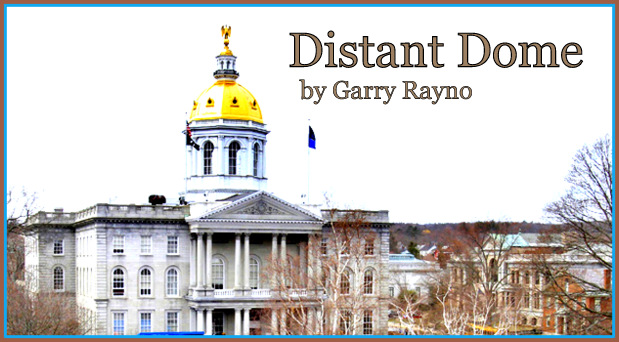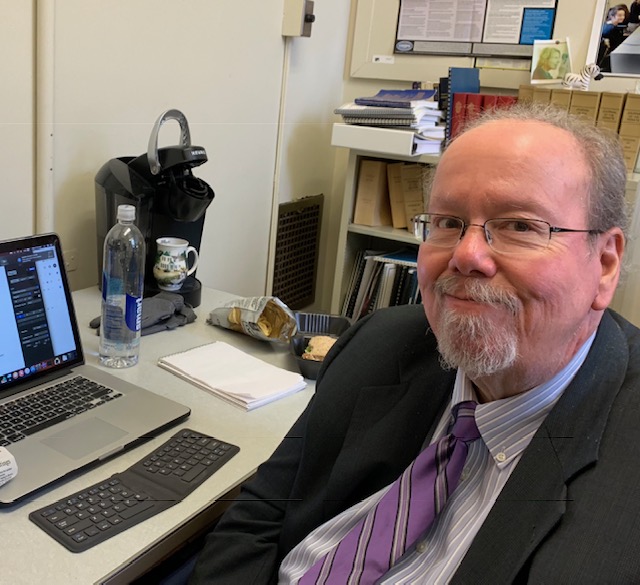
By GARRY RAYNO, InDepthNH.org
CONCORD – Charter schools have always been the poor step-child of public education in New Hampshire, and often one of the most contentious.
A political battle erupted in the last month over federal start-up money — $46 million — that Department of Education Commissioner Frank Edelblut says will double the number of charter schools in the state.
That sounds wonderful and would be if charter schools were able to provide the innovations and potential achievements supporters tout, but unfortunately fiscal reality often intervenes.
While the latest skirmish is over federal money, charter schools have been a long, bitter battle for lawmakers for decades.
During the 1990s, alternative education proponents pushed the state to establish charter schools like other states, freeing the new schools from the regulations and standards public schools had to follow. They argued the charter schools would allow varying educational models that would better serve students not fitting into the traditional model.
Anti-labor advocates
The effort was supported by anti-labor union advocates who saw an opportunity to reduce the influence of educators who represented one of the biggest organized labor unions in the state.
The teachers’ unions, public education officials and many municipal officials opposed establishing charter schools arguing the money would be better spent on alternative programs within existing schools.
After several fits and starts, lawmakers finally approved charter schools in 1995. The process required charter school founders to win both local school board and district approval which was daunting.
As expected, most school administrators, officials and district voters were reluctant to spend tax dollars on charter schools when they already were having difficulty funding existing public schools.
For the first few years after charter schools were approved, only a couple of proposals were approved and certainly no projects that would seriously attract students into alternative learning environments.
Charter school proponents sought another approval process that would allow the establishment of more charter schools.
In 2003, the legislature adopted a “pilot program” allowing the state school board to approve up to 20 charter schools funded by federal start-up grants totaling $18 million.
New charter schools began opening, often with emphasis on such things as the arts, classical education or the sciences and a few were intended to provide alternatives to at-risk students in the traditional schools.
Funding woes
But funding after the initial federal boost was a problem for many of the schools as a 2007 study of charter schools noted in its executive summary.
“The growth of the New Hampshire charter school program since its creation in 1995 has been limited by a number of factors, perhaps most importantly the uncertain and shifting funding environment in which New Hampshire charter schools have been authorized and operated.
“The charter school law provides that charter schools that are eligible for grants shall match funds provided by the state through private contributions. However, this review has not disclosed evidence of significant private fundraising on the part of charter schools in New Hampshire.
“State tuition payments for charter schools are widely regarded by charter school administrators as inadequate to serve as the sole source of funding for their schools. The basis on which the charter program was established, that is that philanthropic funding would fill the gap between state charter tuition grants and the amount needed to fund a school, has not proven to be the case,” according to the review.
Only about four or five of the early charter schools survived, most with backing from local school districts such as CSI Charter School in Penacook, Great Bay eLearning Charter School in Exeter and North Country Charter School with locations in Littleton and Lancaster.
Also of note is the Virtual Learning Academy Charter School in Exeter, which was approved by the state board in 2007 and provides “distance learning” programs to schools throughout the state with credited on-line classes if students pass the courses.
On the other side, five early charter schools closed due to low enrollment and financial issues.
Most of the charter schools operating now were approved in the last 10 to 15 years.
Existing Charter Schools
Currently there are 30 state-approved charter schools, according to the Department of Education’s website, including one that is scheduled to open for the 2020-2021 school year.
Charter schools serve more than 3,200 students around the state and students may attend free no matter where they live.
Under the recent $46 million, five-year federal grant, Edelblut told lawmakers the money would be used to establish 20 new charter schools, to replicate seven others, and to expand five existing, high-quality charter schools.
The focus would be on at-risk students and greater educational opportunities, Edelblut told lawmakers .
The money would also allow the department to add two program specialists, provide additional training to charter school staffs, improve facilities, and expand best practices to other charter and traditional schools, he wrote lawmakers.
But the Joint Legislative Fiscal Committee turned down the first installment of $10 million of the grant last week on a partisan 7-3 vote.
So, what is the problem with accepting the federal money?
In a word, funding.
State adequacy grants provide about $3,700 per student to traditional public schools and initially to charter schools. However, as the 2007 review noted, that is not enough to make charter schools financially viable without looking to outside sources for revenue besides tuition.
While traditional schools use local property tax dollars to “supplement” state aid, charter schools do not have the ability to tap into that revenue stream and consequently lawmakers in the past few years have increased state per pupil aid to charter schools.
Currently charter schools receive not quite twice the per pupil amount traditional schools receive. And in the state operating budget approved for the 2020-2021 fiscal year, charter schools will receive disparity aid to help students from property-poor school districts.
However, there is a finite limit on state aid in any given year so how it is divvied up becomes an issue – and it did.
The money
Using basic math, if another 3,200 students or more go to the new charter schools, that means school districts will lose about $14 million in state aid they were receiving but that would “follow the student” to a charter school.
And the state provides an additional $3,400 per pupil to charter schools so an additional $11 million will be coming out of the adequate education funding pool.
The problem for many property-poor school districts that have the most difficult time raising money for education will be exacerbated because the loss of some students will also mean the loss of additional state aid for poverty, special education or English as a second language.
Because of the thresholds for the additional state aid, the loss of a few students to some school districts could be very significant in state dollars.
This grant comes at a time when the legislature increased state education aid by about $140 million in the current operating budget, the biggest increase since education funding was revamped in light of the Claremont education lawsuit two decades ago.
So, on one hand the state is giving school districts, especially poor districts, more state money, and on the other, taking it away if some of their students leave for charter schools.
The budget also contained a study commission to determine the true cost of an adequate education — certainly more than $3,700 a pupil or even $7,100 — and to recommend potential paths to a more equitable education funding system.
The issue is the state’s education policy and not so much partisan politics as some claim.
Does it make sense to expand charter schools at a time when the state is trying to help property-poor districts provide greater opportunities for their students and a slightly more equitable funding system?
Policy control
That is a policy issue and policy has always been the purview of the legislature, and not un-elected state bureaucrats or the executive branch.
While the legislature has supported expanding charter schools in the past, that does not mean it does today even if the commissioner of education believes he is simply following precedent.
It is easy to portray this battle as the education unions versus those seeking to decentralize the state’s education system, but it is much more about who controls public policy: the legislature or the executive branch.
This is not the first disagreement over who determines public policy and it will not be the last, but it is one of the more explosive politically.
An election year is approaching and why waste any opportunity to define the opposition in the worst light possible.
The accusations have just begun.
Garry Rayno may be reached at garry.rayno@yahoo.com.
Distant Dome by veteran journalist Garry Rayno explores a broader perspective on the State House and state happenings for InDepthNH.org. Over his three-decade career, Rayno covered the NH State House for the New Hampshire Union Leader and Foster’s Daily Democrat. During his career, his coverage spanned the news spectrum, from local planning, school and select boards, to national issues such as electric industry deregulation and Presidential primaries. Rayno lives with his wife Carolyn in New London. InDepthNH.org is New Hampshire’s only nonprofit, online news outlet dedicated to holding government accountable and giving voice to marginalized people, places and ideas.





